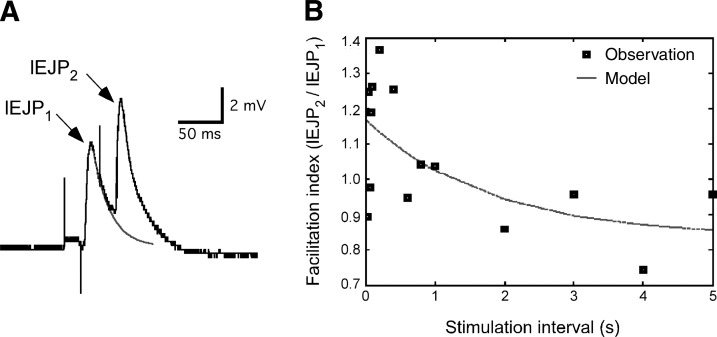Fig. 5.
Example of a student-initiated electrophysiology experiment: analysis of short-term plasticity at the larval neuromuscular junction. A: pair of LEJPs evoked by 20-ms light pulses spaced 40 ms apart. Arrows indicate LEJPs. To compensate for additive summation at short stimulation intervals, an exponential curve (shaded line) was fit to the repolarizing phase of the first EJP. The amplitude of the LEJP2 was determined by the difference between its peak voltage and the exponential fit voltage at the time of peak voltage. B: paired pulse facilitation indexes over a range of stimulation intervals (■). Data were fit to an exponential decay equation. The calculated long-term facilitation ratio was 0.8 ± 4 (95% confidence interval). Data were from a single neuromuscular junction. All experimental design, data collection, analysis, and figure preparation were carried out by students.

